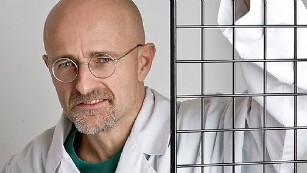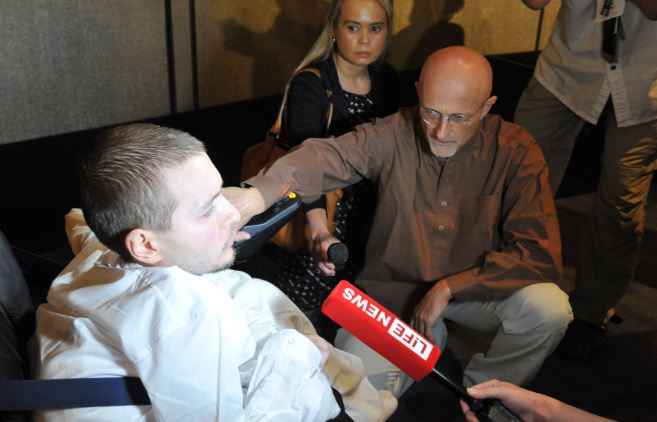Depression afflicts an
estimated 16 million Americans every year, many of whom go to their doctors in despair, embarking on an often stressful process about what to do next.
These visits may entail filling out forms with screening questions about symptoms such as mood changes and difficulty sleeping. Doctors may ask patients to share intimate details about such issues as marital conflicts and suicidal urges. Some patients may be referred to mental-health specialists for further examination.
Once diagnosed with depression, patients frequently face the question: “Are you interested in therapy, medications or both?”
As a resident physician in psychiatry, I’ve seen many patients grapple with this question; the most frequent answer I’ve heard from patients is “I’m not sure.” Deciding between different types of medical treatment can be challenging, especially amid the fog of depression. Moreover, patients rely on doctors to help guide them, and we’re often not sure ourselves which is the best approach for a specific patient.
There are many proposed explanations for how specific psychotherapies treat depression. These possibilities include giving patients
social support and
teaching coping skills, and researchers are using
neuroimaging to study how these treatments affect depressed patients’ brains.
Antidepressant medications are thought to work by changing chemical signaling in our brains. For example, one class of commonly used drugs — selective serotonin reuptake inhibitors — is designed to alter levels of the neurotransmitter serotonin in the brain. These antidepressants
may be effective for treating depression in some patients, but the neurochemistry of depression remains
poorly understood, and we’re still not entirely sure how these drugs alleviate depressive symptoms.
A number of recent studies highlight the uncertainty involved with these treatment decisions. Researchers have dedicated considerable effort to studying the relative effectiveness between psychotherapies and antidepressants, frequently without finding much difference. For instance, a
study published in 2012 reviewed data from more than 100 prior trials and included more than 10,000 patients; although psychotherapies and antidepressants each worked better than placebo in blinded trials at reducing depressive symptoms, neither of these treatments was more effective than the other. Furthermore, psychotherapies and antidepressants did no better overall than alternative therapies such as exercise.
If psychotherapy and medication are both used to treat depression, could using them together work even better?
This is a valid question, and one often brought up by patients. But the efficacy of combining these treatments is controversial in medical circles: Studies have come to different conclusions about it. As a result, many patients
still receive one or the other first.
In 2016, the American College of Physicians released
guidelines about using antidepressants as opposed to non-pharmacologic therapies for depression. After reviewing decades of evidence, a committee concluded that CBT and newer-generation antidepressants are “similarly effective treatments” for adults with major depression. The guidelines recommend that “clinicians select between either cognitive behavioral therapy or second-generation antidepressants” for treating patients with depression.
The authors of these guidelines also raise an important point: Doctors commonly turn first to antidepressants when treating patients with depression, even though evidence suggests alternate therapies are just as effective. The medications can also have side effects including nausea and vomiting as well as dangerous interactions with other drugs.
Does this mean antidepressants are overprescribed?
It depends on how you interpret the question. Antidepressant use has risen considerably in recent years, while psychotherapy use appears to be
stable or declining, because these treatments are often equally effective in managing depression, this might suggest we’re relying more on these drugs.
Some patients may prefer to take medications for depression. Many people do not have the time to participate in psychotherapies like CBT or psychodynamic therapy — a type of talk therapy that explores the interplay between unconscious feelings and distressing symptoms — which can span multiple hour-long sessions over months. Others may not have access to mental-health specialists who can provide appropriate therapy. Then there are patients who would rather take a pill in the comfort of their own home, instead of opening up about intimate experiences in a doctor’s office.
The structure of our health-care system may also be a factor. Higher
insurance reimbursements for medications rather than psychotherapies may make physicians quicker to pull out the prescription pad. The crunched time and administrative burdens of today’s medical practice can lead to
pressured patient visits that are more conducive to quick check-ins and pills than to in-depth conversations.
As the ACP guidelines recommend, providers should discuss “treatment effects, adverse effect profiles, cost, accessibility, and preferences with the patient” when treating depression. But in today’s hurried medical environment, completing that task in a thorough and comprehensive manner can often be difficult, if not impossible.
These technologies have shown promise, but they remain far from standard clinical practice. And adding more tests to doctors’ visits may ignore the central issue when treating depression: Do we have enough time to truly talk with our patients about their options?
Morris is a resident physician in psychiatry at the Stanford University School of Medicine






















